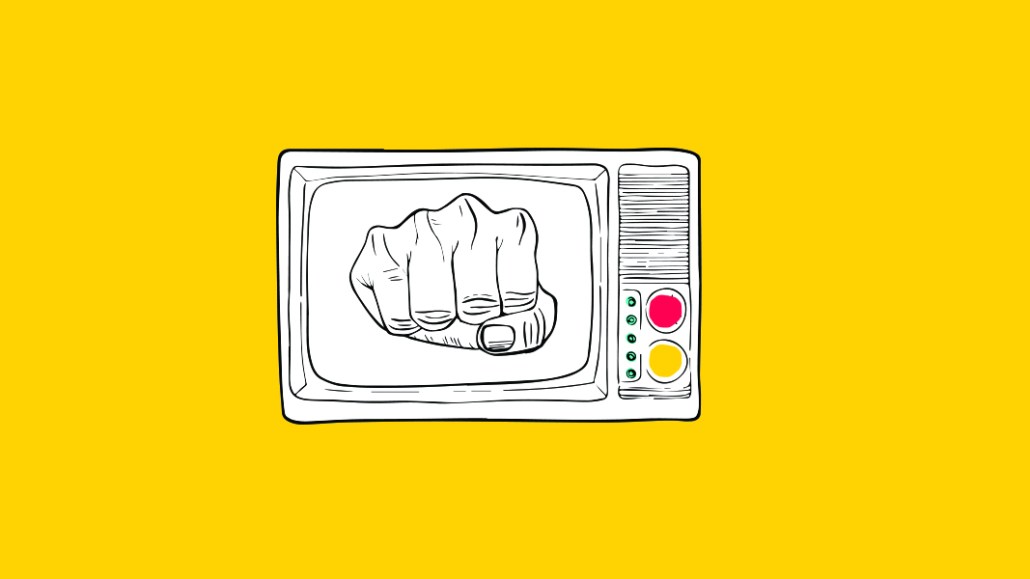Save 50% on a 3-month Digiday+ membership. Ends Dec 5.
How advertisers are navigating advanced TV and premium video convergence

Nicole Schumacher, vice president of product marketing, Xandr
Advertisers have a number of priorities and considerations as premium video content for viewers evolves. Media types are converging as audience behaviors diverge, adding nuance and complexity to each phase of campaign workflows. It’s the age of innovation for all types of video advertising, including convergence — defined as the ability for advertisers to plan, buy, execute or measure campaigns that include more than one type of TV or video inventory.
While advertising decision-makers across the globe are aware of the advantages of automation and convergence for video, their level of adoption differs. Lack of understanding and organizational silos are some of the key obstacles hindering more widespread convergence in the industry.
However, many advertisers have decided that now is the time to double down on data-driven advertising and automation to reap benefits across all campaign stages. Those who lean into programmatic OTT, data-driven linear and the converging of media types are finding they have an advantage over buyers slower to adopt and adapt.
Xandr partnered with Advertiser Perceptions to understand how advertisers around the globe are navigating the complexities of advanced TV and the convergence of video. Below are the key findings from the 2021 State of Convergence and Advanced TV Report based on that research.
Programmatic OTT/CTV is valued over direct but is underutilized
Four out of five regions rank OTT/CTV as a top strategic priority among video types, with respondents identifying easier targeting and optimization, unified campaign activation across multiple sellers and better pricing as the top benefits of programmatic versus direct.
Ad position: web_incontent_pos1
Yet, one in three advertisers still lack familiarity with the programmatic OTT buying process. Many advertisers cite a lack of control over the ad buy as well as difficulty transacting with publishers’ walled gardens as key roadblocks to adopting programmatic OTT/CTV.
As a result, only around half of OTT/CTV budgets across key regions are allocated to programmatic buys, even though the majority of advertisers see key benefits to automating OTT ad buys.
Data-driven linear provides advertisers with the best of TV and digital advertising
Data-driven linear (DDL), which places ads based on advanced consumer data sets beyond age and gender, is another key pillar of video innovation. More advertisers are discovering the obvious benefits of DDL over traditional linear advertising, with three out of four advertisers believing DDL gives marketers the very best of TV and digital advertising.
As a result, more than half of U.S. advertisers plan to ramp up DDL spend in the next 12 months. Including automation in the DDL buying process is adding even more benefits than those of traditional linear TV buying.
Ad position: web_incontent_pos2
Advertisers said the top benefit of platform-based DDL buying is the ability to define campaign parameters once and view a single proposal across multiple media owners with deduplicated reach.
Budgeting, campaign planning and activation are the stages most in need of convergence
Budgeting, campaign planning and activation are the workflow stages that marketers say could benefit most from greater convergence. The top two reasons advertisers gave for this need for greater convergence were to see deduplicated reach and better manage frequency.
For the activation stage, the ability to activate campaigns in one place and make it easier to target or exclude TV-exposed audiences on digital were deemed most important.
Convergent solutions help maximize reach and provide better frequency management. They are also essential to closing the loop on video campaigns by providing more comprehensive reporting that is valuable when determining the ROI of ad buys.
Although convergence is complex and will take time to be realized at every workflow stage, advertisers can fuel continued innovation by partnering with knowledgeable experts to test and adopt new technologies.
Maximize the full value of video innovation and convergence
Moving forward, programmatic OTT/CTV, DDL and converging media types will equip advertisers who leverage them with strong benefits in unifying campaign planning and activation, optimizing reach measurement and driving top-of-funnel buying efficiencies. However, people and technology will have to adapt and advance together to maximize the full value of video innovation and convergence. It will be necessary for advertisers to identify the right partners — those with technology and experience in both TV and digital, with a focus on the future of premium video advertising — to drive continued success in the age of advanced TV and convergence.
More from Digiday

Ulta, Best Buy and Adidas dominate AI holiday shopping mentions
The brands that are seeing the biggest boost from this shift in consumer behavior are some of the biggest retailers.

Digiday+ Research Subscription Index 2025: Subscription strategies from Bloomberg, The New York Times, Vox and others
Digiday’s third annual Subscription Index examines and measures publishers’ subscription strategies to identify common approaches and key tactics among Bloomberg, The New York Times, Vox and others.

U.K. retailer Boots leads brand efforts to invest in ad creative’s data layer
For media dollars to make an impact, brands need ad creative that actually hits. More CMOs are investing in pre- and post-flight measurement.
Ad position: web_bfu
